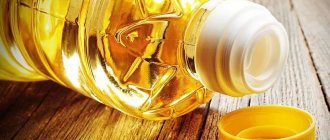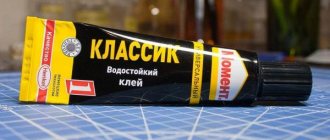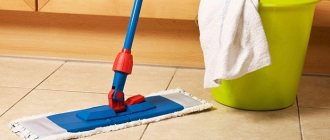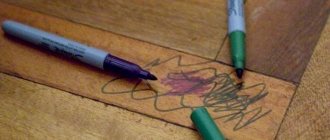Paint can get onto a metal base by accident, or over time, the layer of dye applied to the metal becomes unusable, begins to peel off and is damaged by corrosion. To return the item to its original appearance, make it more attractive and prepare it for repainting, the old layer of paint and varnish products and random splashes must be removed.
There are many simple methods that can help you quickly remove paint from metal at home, but before using them, the surface of the item must be prepared.
General recommendations
When choosing a product to remove old paint from metal, you should be guided by the following principles:
- When using professional compounds, you should exclude those intended for other surfaces.
- If the type of paint is not known, you should use a universal product. But the best effect is achieved by using specialized solutions.
- It is important to exclude toxic substances that can harm health and damage the surface.
- Mixing different drugs is unacceptable.
- When removing old paint laid in several layers, the procedure will have to be repeated more than once.
- When using chemicals, you should take care of protective equipment and ventilation of the room.
- Gel formulations are more effective than liquid formulations because they contain more active ingredients.
If the product used to remove old paint from metal contains paraffin, the surface must be degreased before applying a new layer. Otherwise, sufficient adhesion will not be achieved.
Features of cleaning metal from paint
Cleaning metal from old paint involves the use of various tools and means. Regardless of which method is chosen, some features of the procedure must be taken into account.
Key factors to consider:
- type of paint;
- properties of the metal to be cleaned;
- thickness of the old layer;
- follow-up actions upon completion of cleaning.
When removing old coating from metal, vapors or dust may form, which is harmful to health, so you need to use a respirator, gloves and safety glasses. Chemicals should be used to wash off the old layer in accordance with the instructions for their use.
Important! The initially chosen method should be tested on a small, inconspicuous area to ensure its effectiveness.
Overview of common techniques
For the procedure, the choice is between mechanical, thermal and chemical methods. Their feasibility is determined based on:
- from surface properties;
- from the type of dye;
- their layer thicknesses;
- from adhesive characteristics;
- from the available set of tools;
- from financial possibilities.
When deciding how to remove old paint from metal, you need to consider the strengths and weaknesses of the methods described below.
Selecting a washing method
If you want to change the paint on any metal object, you need to be patient. The first step is to remove the paint layer.
- Manufacturers are striving to improve their paint and varnish products.
- When repainting metal, this can become a serious problem: it is impossible to manually remove the old layer of paint due to its resistance to external factors.
- Therefore, you need to prepare before starting work: stock up on the appropriate equipment, find time, space, etc.
To remove the paint layer, there are 3 methods. Each of them is used in different conditions and depends on how many layers of paint are applied, how much money is allocated for this process, the type of paint, the availability of the required tools, etc.
Before you start washing off the paint, you should familiarize yourself with the following methods and choose the most optimal one.
Mechanical
This method involves applying sandpaper, a spatula, a sharp knife or a power tool to the paint. This is followed by sanding and washing off the debris with water. Saving money is the only advantage of the option. At the same time, the process is connected:
- with great time and effort costs;
- with the risk of deforming the surface;
- health hazards associated with dust generation.
In addition, modern compositions are characterized by high adhesion, and they can be removed mechanically only after treatment with solvents.
How to remove it from ceilings, plastic, fabric and other surfaces?
For a specific type of surface, a specific product for removing paint stains is suitable.
| Surface type | Suitable product with brief instructions |
| Plastic | It is recommended to remove dirt with WD-40 aerosol. The plastic should be wiped with a soft sponge treated with this product. Hard brushes can damage the plastic. |
| Textile | Thick fabrics can be cleaned with white spirit, turpentine, vinegar or kerosene. Delicate fabrics should not be stained with solvents. It is better to limit yourself to a soap-soda solution. After processing the fabric, it should be washed thoroughly. |
| Skin of hands | Skin is sensitive to solvents. To remove traces of acrylic from the skin of your hands, you should use alcohol, scrubs, soda with dishwashing liquid, vinegar, and hydrogen peroxide. After treatment, you need to wash your skin with warm water and soap, and then treat it with a moisturizer. |
| Ceiling | It is washed off acrylic paint with a mixture of dishwashing liquid and soap solution. You can use hydrogen peroxide. The ceiling must be treated with a soft cloth. |
| Linoleum | Any solvent is suitable for cleaning. In the process of cleaning the surface, you can use spatulas and scrapers. |
| Tile | Any solvent can be used to clean the surface from dyes. When cleaning, scrapers, spatulas, and knives are used. |
| Glass | For processing, it is recommended to choose white spirit. Knives with sharp blades can be used to scrape off dirt. |
| Wallpaper | Chemical agents are not suitable for cleaning the surface. Natural solvents should be chosen. You can use dish soap and soap. When cleaning, use soft sponges. Do not clean wallpaper with scrapers or hard brushes. |
Thermal
Removing old paint from metal using temperature is effective for old coatings applied in several layers. Heating reduces adhesion, so the composition can be easily removed by hand. It is important to take into account that:
- heating paint indoors will result in poisoning with hazardous substances;
- working near flammable substances will result in a fire;
- soft metals, including brass or cast iron, will warp when heated.
Given the high danger of the method, it is rarely used.
Products for removing old stains at home
You can remove polymer stains not only using aggressive professional cleaners, but also using folk methods. The cleaning process will take much more time and labor. There is soda in every home. It is optimal if you need to remove a small speck. To do this, you need to slightly moisten the stain with warm water and apply a paste of baking soda and water onto it. Leave the mixture for 20 minutes and then use a cloth to remove the stain using gentle movements.
Baking soda is optimal if you need to remove a small stain.
How to clean acrylic varnish? Turpentine, which is included as a thinner in the composition of many varnishes. It helps soften acrylic stains, which can then be washed off in any simple way after softening. For example, using warm water and dishwashing detergent.
Turpentine helps soften acrylic stains, which can then be washed off in any simple way after softening.
Hair dryer. A jet of hot air acts as a “softener”. You can also use, but with greater care, an iron with a steam function. A hairdryer is good for treating hard surfaces, an iron or a steam generator is effective in combating stains on fabrics.
A jet of hot air acts as a “softener”.
For cleaning glass and mirror surfaces, you can use regular white spirit or nail polish remover. You can remove acrylic stains from linoleum and other floor coverings by lightly prying the edge with a sharp object.
For cleaning glass and mirror surfaces, you can use regular white spirit or nail polish remover.
Chemical
This method consists of using professional or folk remedies to remove old paint from metal. Based on their direction, mixtures are distinguished that eliminate:
- oil;
- powder paint;
- dyes from ferrous or non-ferrous metals.
Universal formulations are sold separately. Chemicals for dissolution are available for purchase in the store, or you can prepare it yourself.
Note!
Chipboard: what is it? Types, application features, photos, sizes, thickness, explanation, manufacturers
DIY houses made from shipping containers step by step: instructions, diagrams, pros and cons, photos, design
- Working pressure in the heating system in a private house: what it should be, how to create it, instructions for adjusting it yourself
The work is organized in stages. First, the treated area is cleaned of contaminants. Then the prepared product is applied to the surface and covered with plastic wrap. Then wait until the layer separates from the base. This is evidenced by characteristic bubbles on the coating.
Finally, all that remains is to remove the remaining dye mechanically. The surface is sanded with sandpaper and then washed with acetone or another solvent. A new layer is applied after drying.
Features of removal from various surfaces
Carpet cleaning. If a stain forms, you must act immediately. If the acrylic has not yet dried, you can simply rinse it with water and wipe it off with a rag. You must act carefully, not allowing the paint to penetrate deep into the pile. Movements should be light and jerky. You should absolutely not rub the stain with force, as this will only make it bigger. You can use a solvent when the paint stain is already old.
You must act carefully, not allowing the paint to penetrate deep into the pile.
Cleaning furniture, glass. To clean them you need to use a razor blade. It is positioned at a slight angle to the surface, the edge of the acrylic clings and the paint is pulled off with slow movements. Using this method, old paint can be easily cleaned.
To clean the glass you need to use a razor blade.
Cleaning clothes. To clean a fresh stain, just blot it with a napkin, then moisten the sponge in solvent and remove the residue, after first turning the clothes inside out.
To clean a fresh stain, just blot it with a napkin, then moisten the sponge in solvent and remove the residue.
Advantages and disadvantages of the chemical method
This method is attractive due to its simplicity of execution. It does not require physical effort to achieve results. But it requires patience, especially when working with slow-acting agents. And the range of products allows you to choose an effective composition for any type of paint.
Among the disadvantages of the method is the need to spend money on products from the store. Or time to prepare folk remedies. In addition, the chemical components are toxic. Therefore, working with them is associated with health risks. Especially in closed spaces. Therefore, when chemically cleaning metal, it is necessary to observe all safety measures and not neglect gloves and respirators.
Most popular mistakes
When removing paint and varnish from a metal surface, the following mistakes should be avoided:
- Using a torch or heat gun indoors. As the paint heats up, it will begin to release toxins, and therefore it will be impossible to avoid poisoning. Such work should be carried out in the fresh air.
- Fire cast iron and brass products. During heating, such metals will begin to become covered with scale and will become more and more brittle, which leads to rapid destruction.
- Working without the use of personal protective equipment, or failing to follow the simplest safety precautions, will increase the risk of injury.
- Mechanical cleaning of thin metal sheets. Pressing too hard can even ruin the product, it will begin to lose its shape, or it may develop dents that will be difficult to remove.
To avoid mistakes when performing work, you should know what metal the product is made of and what paint it is coated with.
By professional means
Among the recommended means for removing old oil paint from metal is called “Constant”. The gray-white composition contains organic solvents, disintegrants and thickeners. According to technical information:
- consumption is 150-170 per square meter, when removing one layer of paint;
- the content of non-volatile components can reach 10%;
- evaporation reaches 6% at a temperature of 20 degrees Celsius;
- It may take 20 minutes to wash off one layer;
- If the solvent remains on the surface longer, there is a risk of corrosion.
The composition is sold ready for use. However, its expiration date remains valid if the product is in a sealed package and is not exposed to direct sunlight or within the range of heating devices. Neomid and Dufa Abbeiser are considered analogues of “Constant”.
How to remove fresh stains
No special products are required to remove fresh stains. Just dampen a cloth in warm water and wipe. However, there are various textures into which foreign compounds quickly penetrate. But even in this case, you can do without aggressive means. If paint gets on the fabric, you should immediately treat the stain with sunflower oil, rub it with ordinary household oil and soak for 15 minutes in very hot water. After time, the fabric is washed either by machine or by hand.
You can treat the contamination with an organic solvent. Isopropyl alcohol is applied to the stain and left for a couple of minutes. After which, it is washed off. If the paint has already penetrated into the surface, you can use a brush with stiff bristles. A mixture of ammonia and vinegar works well on fresh stains. Ammonia and acid are mixed in equal proportions. Then dip a cotton pad into this solution and rub off the stains with smooth movements.
A mixture of ammonia and vinegar works well on fresh stains.
Folk remedies
The oil coating can also be removed:
- A mixture of turpentine and ammonia in a ratio of 2:1. It will take about an hour for the paint to dissolve.
- A solution of quicklime and potash (70/30). The composition is diluted with water until a viscous consistency is formed. It will take 12 hours for the paint to dissolve.
- A mixture of chalk and lime paste in a 1:1 ratio. The composition is supplemented with 20% caustic soda, which gives it a paste-like appearance. The resulting product is applied to the paint in a layer of 2 millimeters. When using this method, mechanical cleaning can begin after an hour or an hour and a half.
Therefore, you can prepare effective remedies yourself. The choice is influenced by the availability of the necessary components, as well as the urgency of the work.
What to do if acrylic paint stains remain after work?
It must be remembered that the composition is oil-based. Its uniqueness is due to the content of acrylic acids, dye pigments, water and film-forming substances. The property of acrylic is such that when it dries, a durable polymer film is formed. It dries in about an hour and during this period of time the dirt can be easily removed. Therefore, if possible, you should always have a rag on hand when painting, so you can easily wipe off stains.
If possible, you should always have a rag on hand when painting, so you can easily wipe off stains.
How to remove water-based paint
This type of coating has less adhesion compared to oil-based counterparts. Therefore, it can be removed with simpler solvents. For example, water-based emulsion can be cleaned mechanically using water. To do this, you will need to leave scratches with a wire brush and treat the surface with warm water. After waiting for the paint to swell, remove it with a scraper.
Note!
Three-way valve in a heating system: instructions on how to choose and install correctly in a private home
How to seal a stove so it doesn’t crack from the heat, what solution: review of the most effective methods + instructions
Why the bottom of the battery is cold and the top is hot - let's look at the reasons. Review of recommendations on what to do and how to fix it
An alternative would be to use wallpaper paste. The composition is applied to paper, which is applied with the sticky side to the paint. When the glue dries, all that remains is to remove the paper coating with a spatula.
Features of stain removal depending on the period of contamination
Masters, answering the question of how to wash acrylic paint, focus on the time period. It affects the complexity of cleaning work, and will also help you choose the best methods and means. For example, if the paint stain is literally fresh, then you can get by with regular warm water and a rag. You can also wash paint brushes with a stream of warm water. No chemicals are needed here.
Paint brushes can also be washed with a stream of warm water.
First hour after coating
From the moment of application to an hour. During this period, there will be no problems getting rid of the stain. Stains should be thoroughly wiped, wait 20-30 minutes and rinse under water. You can use baking soda when the paint starts to dry out a little.
You can use baking soda when the paint starts to dry out a little.
Period from hour to day
An hour after painting, the polymers form a film. To get rid of the resulting stains, you will have to make some efforts and use degreasers:
- Vodka, ammonia, isopropyl alcohol;
- Vinegar;
- Household chemicals for washing windows or dishes;
- Acetone-free nail polish remover;
- Hair fixation spray.
The degreaser is applied to the stain several times using a sponge or rag and carefully rubbed over the stain.
Particular care should be taken when handling textile materials. The use of solvents is unacceptable for them. Therefore, you will only have to use dishwashing detergent.
To get rid of the resulting stains, you will have to make some efforts and use degreasers.
Several days or more have passed
The longer the contamination is not removed, the more difficult it is to get rid of it. So, how to clean acrylic paint after such a period of time? In this case, you will have to use aggressive solvents, first applying them to the contaminated surface. After half an hour, the film will begin to delaminate, and then it can be scraped off using a stiff brush. Such solvents are:
- White Spirit;
- Soda;
- Kerosene;
- Acetone;
- Turpentine.
Due to the strong odor of most products, cleaning work should be carried out in a well-ventilated area or, better yet, outdoors.
Due to the strong odor of most products, cleaning work should be carried out in a well-ventilated area or, better yet, outdoors.
Universal means
These products will be the optimal solution to the problem of removing old paint from metal if its type is unknown. Here you can use:
- An iodine solution, which is obtained at the rate of 200 ml per 10 liters of water. After good stirring, the surface is treated with the product. Cracks that appear will indicate that it is time to begin mechanical cleaning.
- A soap solution prepared from grated laundry soap and water.
- A solution of ammonia. 250 ml of the component is mixed with two kilograms of chalk and a liter of water. The result is a mush-like mixture that will cause the paint to peel off.
For latex coatings, it is recommended to use a solution with dichloroethane or chloroform. To dissolve acrylic dyes, it is recommended to enrich the composition with alcohol, vodka or salicylic acid.
Why the coating may not wash off well
You need to immediately understand what kind of coloring agent this is and what it is made of. After this, you can answer the question of how to remove acrylic paint.
Acrylic paint is a polymer, water-dispersed composition, which includes copolymers as substances for forming a film. Polymers (translated from Greek) are substances consisting of many parts. In fact, these are very large molecules. Dispersed - formed from several bodies that do not enter into a chemical reaction with each other.
The essence of these explanations is as follows. Acrylic is a complex, environmentally friendly chemical compound. It is produced with the participation of a film former, which is responsible for the curing time of the product.
When painting, drops of paint may end up on the floor, clothing or furniture. Sometimes the brush touches surfaces that there was no need to paint. How to remove drops or flaws in the work depends only on the time that has passed since they hit the objects. The hardening time of the film former is 30-60 minutes.
Overview of the main methods
Without removing the paint, it is impossible to properly apply a new coat of paint. There are several ways to get started with this work:
- Perform mechanical cleaning. This option makes sense to use in cases where the work needs to be done urgently, without worrying about the condition of the surface from which the paint is being cleaned. For this purpose, use mechanical spatulas or a grinder with a grinding attachment.
- Sometimes a thermal option is used. This involves heating the metal surface to such an extent as to facilitate removal. This option is very labor-intensive and ineffective.
- Use of specialized chemicals. The use of special cleaning removers allows for high-quality cleaning without damaging the surface. There are many types of such chemicals, allowing you to choose the most effective in each specific case.
For cleaning, you can use an aerosol Source i.ytimg.com
When removing old paint, choose the most suitable options in a particular case. Chemical cleaning agents show higher efficiency.









